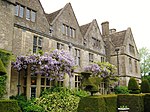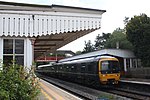Cotswold Airport

Cotswold Airport (IATA: GBA, ICAO: EGBP) (formerly Kemble Airfield) is a private general aviation airport, near the village of Kemble in Gloucestershire, England. Located 4.5 NM (8.3 km; 5.2 mi) southwest of Cirencester, it was built as a Royal Air Force (RAF) station and was known as RAF Kemble. The Red Arrows aerobatics team was based there until 1983. Since 2000, it is used for the storage and recycling of retired airliners, as well as flying schools, clubs, and industry. Cotswold Airport is clear of controlled airspace, allowing free movement for training aircraft. It is centrally positioned between Cheltenham, Gloucester and Swindon. The nearest railway station is at Kemble.
Excerpt from the Wikipedia article Cotswold Airport (License: CC BY-SA 3.0, Authors, Images).Cotswold Airport
Haresdown Hill, Cotswold District Rodmarton
Geographical coordinates (GPS) Address External links Nearby Places Show on map
Geographical coordinates (GPS)
| Latitude | Longitude |
|---|---|
| N 51.668055555556 ° | E -2.0569444444444 ° |
Address
Cotswold Airport
Haresdown Hill
GL7 6PH Cotswold District, Rodmarton
England, United Kingdom
Open on Google Maps







